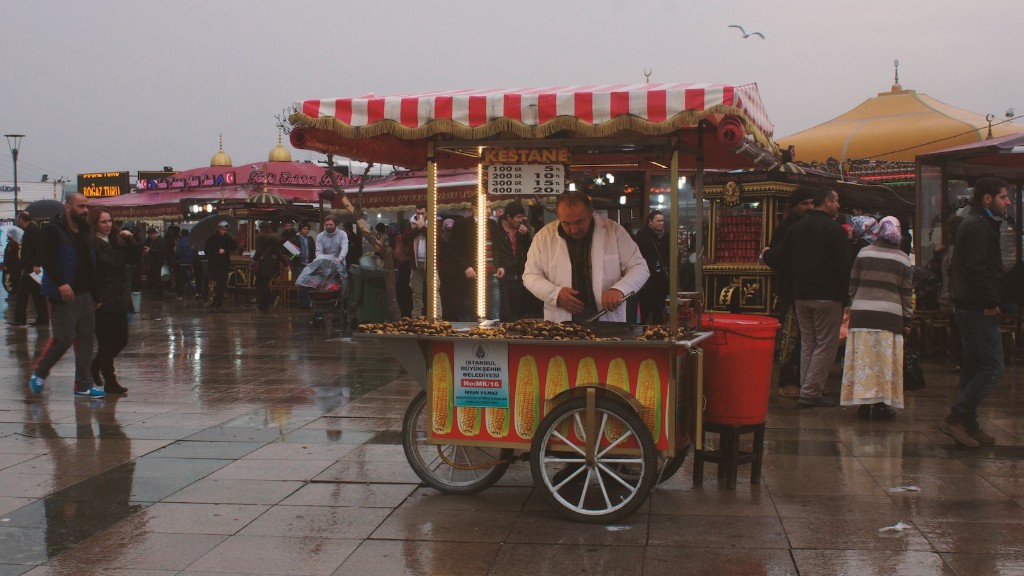Wild turkeys are remarkable animals. Resilient and agile, they fly farther than any other bird of their size to find food and shelter. But just how far can a wild turkey go?
The answer depends on a range of factors, including age, sex, and habitat. For instance, adult males are known to travel up to 50 miles, while females can travel even farther—as far as 150 miles—in search of food and mates. Turkeys also tend to remain in the same general area year-round unless the food sources there become scarce. This means that they can stay in one location for several months at a time, before deciding to look for a new spot to roost.
Experts also point to the importance of genetics when trying to determine the maximum distance a wild turkey can travel. Turkeys with a genetic disposition to move further distances are better adapted to survive in harsh and changing conditions. Research has also shown that wild turkeys have a natural affinity for locating and taking advantage of food sources and nesting sites when available.
The wild turkey’s adaptability is further evidence of its remarkable capacity for distance travel. Turkeys have been known to fly short distances, but the most impressive long-distance survival feats involve walking and running instead. When food becomes scarce, turkeys can cover surprising distances in a single day, desperately searching for food to eat.
However, wild turkeys are not built for long-distance travel, and after exhausting their energy resources, they must rest and recuperate before embarking on any further journeys. This makes them vulnerable to endangerment and deterioration of their health due to exhaustion. For this reason, it is important to consider the welfare of wild turkeys, as they are an important part of the natural habitat.
Human Intervention
Wild turkeys are particularly vulnerable to humans and their activities. Whether it’s hunting, trapping, or habitat destruction, humans can have a tremendous impact on the ability of a wild turkey to travel and survive in its environment.
As humans encroach on the turkey’s habitat, they are more likely to be killed or injured, decreasing their ability to travel far distances in search of food and shelter. For this reason, conservation of wild turkeys is an important part of protecting their right to freely travel and remain safe in their natural habitat.
However, conservation is not the only way humans can be helpful to wild turkeys. People can also help by providing food and water sources in areas where turkeys normally cannot thrive as a part of their daily food intake. Additionally, installing wildlife crossings and making space for the turkeys to freely roam, can make it easier for them to cover greater distances without being disturbed.
Invasive Species
Invasive species are also a threat to wild turkeys and their ability to travel. A number of invasive species, such as foxes and coyotes, can prey on wild turkeys, limiting their ability to travel and survive. Invasive plants, such as kudzu and starlings, can also pose a threat to the turkey’s natural habitat, making it more difficult for the turkey to find resources in its environment.
To reduce the impact of invasive species, it is important for humans to take necessary preventive measures in controlling the spread of non-native species. These measures include efficient cleaning of birdbaths and pet waste, as well as burning off areas that have become overgrown.
It is also important to educate the community on the importance of preserving the turkey’s habitat and resources, as well as to coordinate with state parks and wildlife organizations to create a safe environment for turkeys to co-exist with humans. Only by taking measures to protect the wild turkey’s environment can humans ensure their ability to freely travel without obstruction.
Impact of Temperature on Turkey movement
The temperature of the environment also plays an important role in the ability of a wild turkey to travel. Cold temperatures can make it difficult for wild turkeys to remain active and forage for food, leading to slower traveling speeds and lower distances traveled.
On the other hand, high temperatures can cause turkeys to become lethargic and disoriented, making it difficult for them to stay focused while they travel. This can lead to wild turkeys making dangerous paths of travel, putting themselves and other animals in danger.
In order to ensure that wild turkeys maintain their ability to travel long distances, it is important to maintain a safe temperature range in their environment. This means regulating temperatures with climate change in mind and recognizing when it is necessary to intervene and provide the turkeys with the resources they need to survive.
Turkey Flying
Despite their inability to fly long distances, wild turkeys have the incredible ability to soar tremendous heights and travel up to 4 miles in an hour when they take to the sky. This makes them ideal for long-distance migration, as they can easily soar over mountains and canyons that might otherwise be impassible.
The turkey’s incredible flying capabilities also make them all the more impressive when it comes to near-ground navigation. Turkeys can navigate mountainous terrain with considerable ease,covering more ground in less time than if they were to walk.
Moreover, their intricate flying skills enable them to move quickly and easily over obstacles that stand in their way. This makes them particularly well-adapted for escaping danger, such as predation by other animals, while searching for food and shelter.
Turkey Trotting
When it comes to ground travel, wild turkeys possess an impressive repertoire of walking and running skills. In part, this is due to their unique physiology, which gives them a natural advantage in traversing landscape prey to natural hazards and obstacles.
Wild turkeys also have a tendency to move in large groups, which offers them support and strength in navigating difficult terrain such as thick forests and large bodies of water. This group mentality increases the turkey’s capacity for efficient travel as it allows them to share food sources and locate safe spaces with more ease.
Lastly, wild turkeys possess an inherent ability to scan the terrain they are travelling, in order to identify potential dangers and obstacles. This ability to anticipate and react quickly enables turkeys to safely explore their environment and travel farther distances than they would without such skills.
Turkey Resiliency
Wild turkeys are remarkable creatures whose capacity for travel are astounding. From soaring to flying, walking to running, wild turkeys have the ability to make incredibly long-distance migrations with ease.
However, it is important to remember that humans play a tremendous role in the turkey’s ability to travel. Through conservation, human aid, and maintenance of their habitat, humans can ensure that wild turkeys remain safe and unencumbered in their travels. This will ensure the sustainability of the species, allowing for their ability to travel far and wide for generations to come.





